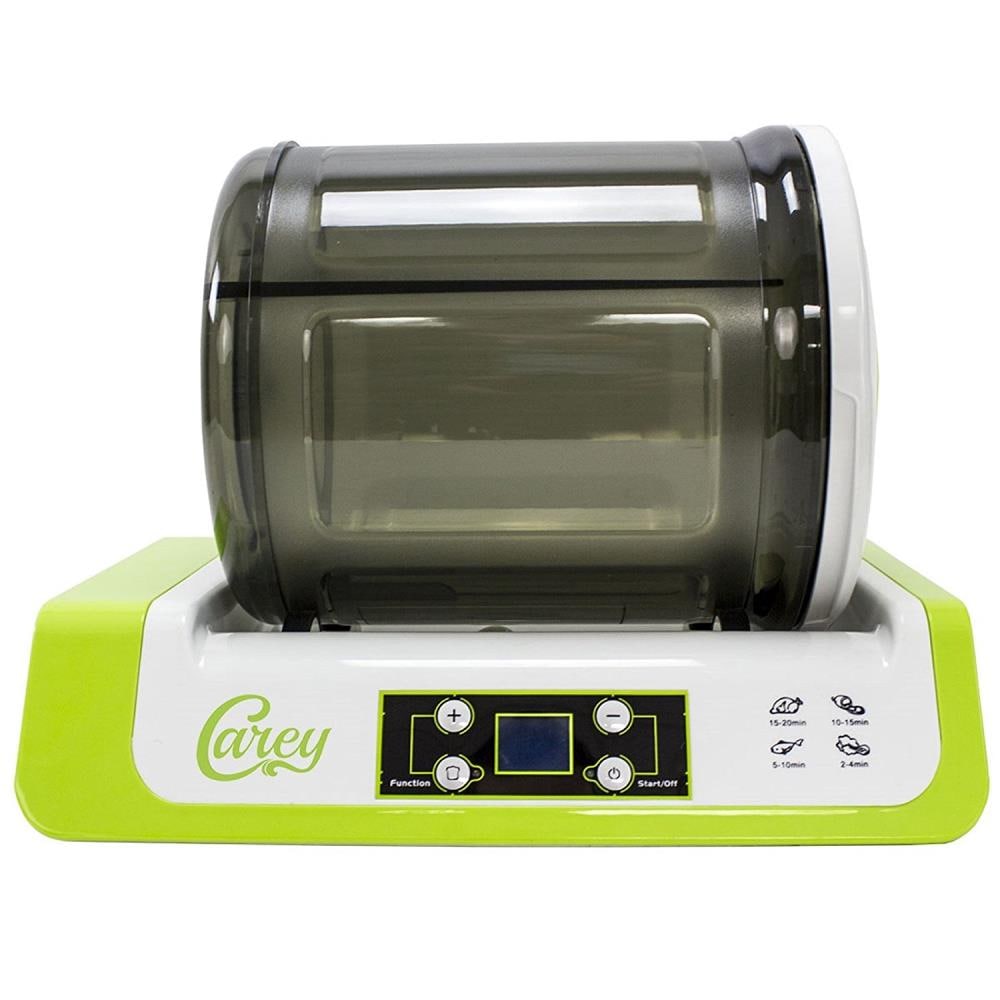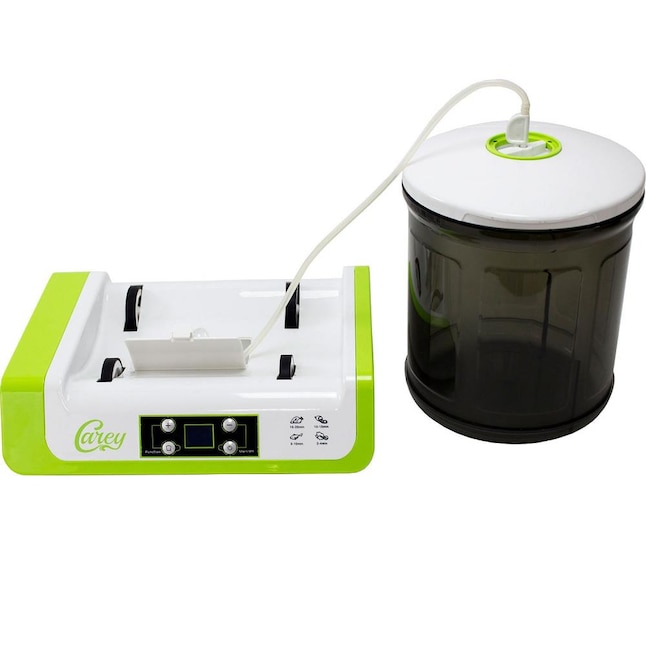10 years of experience as a food machinery equipment manufacturer
10 years of experience as a food machinery equipment manufacturer
Marination is a culinary process that has been employed for centuries to enhance the flavor and tenderness of various food items, particularly meats, poultry, and fish. Traditionally, this involves soaking food in a seasoned liquid mixture for an extended period, allowing the flavors to slowly permeate the ingredients. However, modern culinary technology has introduced methods to expedite and improve this process. One such innovation is the vacuum tumbler marinator, a device designed to significantly reduce marination times while potentially enhancing flavor absorption and food texture.

The Carey Vacuum Tumbler Marinator is an example of such a device aimed at both home cooks and culinary enthusiasts seeking to optimize their food preparation. Understanding its operational principles and features can provide insight into its potential benefits in the kitchen.
Vacuum tumbling technology operates on a dual-action principle: the creation of a vacuum environment and the mechanical action of tumbling. When food is placed inside the marinator drum and a vacuum is drawn, air is removed from the chamber and, importantly, from within the porous structure of the food itself. This expansion of air pockets and muscle fibers is thought to create more space for the marinade to penetrate.
Simultaneously, the drum of the marinator rotates or “tumbles.” This constant, gentle agitation ensures that all surfaces of the food are consistently exposed to the marinade. The tumbling action also serves a mechanical tenderizing function, helping to break down tougher muscle fibers. The combination of the vacuum, which opens up the food’s structure, and the tumbling, which massages the marinade in, allows for a much faster and potentially deeper marination compared to static soaking methods.
When evaluating a device like the Carey Vacuum Tumbler Marinator, several features are pertinent to its functionality and user experience:
The application of vacuum tumbler technology in marination offers several potential advantages for the user:
Reduced Marination Time: This is perhaps the most significant benefit. Processes that might traditionally take several hours or even overnight can often be accomplished in a fraction of the time, typically ranging from 20 minutes to an hour, depending on the food type and desired intensity.
Enhanced Flavor Penetration: By removing air and opening the food’s pores, the vacuum environment facilitates deeper and more uniform absorption of the marinade. This can lead to more intensely flavored food. The tumbling action ensures all parts of the food are evenly coated and exposed to the marinade.
Improved Tenderness and Moisture: The mechanical action of tumbling can help to break down connective tissues in meat, resulting in a more tender product. The enhanced absorption of the liquid marinade can also contribute to moister cooked results, as the marinade helps to retain moisture during the cooking process.
Consistency: Automated tumbling and a controlled vacuum environment can lead to more consistent marination results compared to manual methods, where marinade distribution might be uneven or penetration might vary.
Marinade Efficiency: Because the process is more efficient at driving marinade into the food, it’s possible that less marinade is required overall compared to traditional soaking methods where a large volume of liquid is often needed to fully submerge the items.

Versatility: Vacuum tumbler marinators are not limited to just one type of meat. They can be used for beef, pork, poultry, fish, and even vegetables. This versatility makes them a useful tool for a wide range of recipes and cooking styles, from grilling and barbecuing to roasting and pan-searing.
While the benefits are compelling, prospective users should also consider the practical aspects. The size of the unit and storage space required are practical considerations for any kitchen appliance. The noise level during operation might also be a factor for some users. Furthermore, understanding the optimal marination times and vacuum levels for different types of food may require some initial experimentation to achieve desired results consistently.
The cleaning process, although often simplified by design, is still a necessary step. Ensuring all parts that come into contact with raw food are thoroughly cleaned and sanitized is crucial for food safety.
The Carey Vacuum Tumbler Marinator, and similar devices, represent a technological advancement in a traditional culinary practice. By leveraging the principles of vacuum pressure and mechanical agitation, these appliances aim to offer a more efficient and potentially more effective way to marinate foods. The primary benefits often cited include significantly reduced marination times, deeper flavor infusion, and improved texture in terms of tenderness and moisture retention.
For individuals who frequently marinate foods, value consistency, or are looking to save time in their meal preparation, a vacuum tumbler marinator can be a worthwhile addition to their kitchen arsenal. Its ability to quickly impart flavor and tenderize can be particularly advantageous for busy households or for those who enjoy entertaining and wish to prepare flavorful dishes without extensive pre-planning. As with any kitchen tool, the specific utility will depend on the user’s cooking habits, the types of food they prepare, and their desired outcomes.
